|

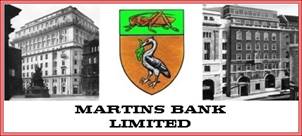

 The fifteen years that lead up to the 1969 merger with
Barclays is quite possibly the last period of real and steady growth in
the “old-fashioned” types of bank
branch – untouched by computer technology, still operating systems and
policies that go back fifty years or longer.
This “golden era” will shortly be consigned to history with the advent
of competition – slowly at first with the invention of the credit card and
the cash machine, then moved up a gear by clever advertising. The fifteen years that lead up to the 1969 merger with
Barclays is quite possibly the last period of real and steady growth in
the “old-fashioned” types of bank
branch – untouched by computer technology, still operating systems and
policies that go back fifty years or longer.
This “golden era” will shortly be consigned to history with the advent
of competition – slowly at first with the invention of the credit card and
the cash machine, then moved up a gear by clever advertising.
|

In Service: 1953 until 14
July 1972

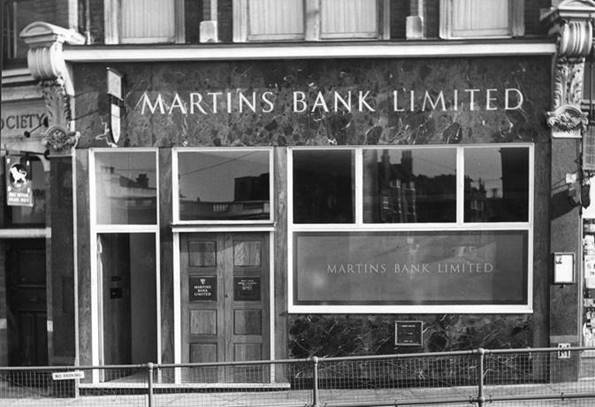
Branch Images © Barclays
Ref 0030-1071
|
|

 Finally comes the meltdown of
branch banking that we see today, where we are encouraged to close branches
ourselves by implication: By using the internet to perform banking transactions,
we are apparently saying we don’t want Branches any more. Although the old
Martin’s Private Bank provided a number of branches on the edges of London
and in Kent, the modern day Martins Bank does not limit its southern
expansion to places outside the capital.
From the 1930s to the 1960s a large number of new Branches are opened
both in central and outer London, taking advantage of locations where the
banking business can easily be poached from the Bank’s rivals. Sometimes branches are acquired FROM other
banks when their own branch network plans cause a property to become
vacant. Sometimes a site is just
perfect, as in the case of our Martins’ Branch at Golders Green, which is
visited not long after opening, by Martins Bank Magazine in 1954… Finally comes the meltdown of
branch banking that we see today, where we are encouraged to close branches
ourselves by implication: By using the internet to perform banking transactions,
we are apparently saying we don’t want Branches any more. Although the old
Martin’s Private Bank provided a number of branches on the edges of London
and in Kent, the modern day Martins Bank does not limit its southern
expansion to places outside the capital.
From the 1930s to the 1960s a large number of new Branches are opened
both in central and outer London, taking advantage of locations where the
banking business can easily be poached from the Bank’s rivals. Sometimes branches are acquired FROM other
banks when their own branch network plans cause a property to become
vacant. Sometimes a site is just
perfect, as in the case of our Martins’ Branch at Golders Green, which is
visited not long after opening, by Martins Bank Magazine in 1954…

 Our
new premises at Golders Green are excellently sited opposite the Tube Station
at the main cross-roads on the Finchley Road. The office interior is a
pleasing departure from the traditional oak or mahogany and the woodwork of
light walnut and East African Oliverwood, in conjunction with concealed
lighting which shines on walls each different in shades of olive green, lime
green and grey, give a bright, welcoming and friendly appearance. The
Manager's room is one of the most unusual we have seen, the wall behind the
manager's desk being faced with wall-paper of attractive design to which
attention is drawn by concealed lighting, and the remaining walls are painted
grey, the whole effect being harmonious and restful, though perhaps a trifle
exotic. It is one of those odd
things that when the provincial is asked what he knows about Golders Green
the thought which immediately springs to his mind is that of a crematorium.
We shared this odd reaction and even suggested that the staff photograph
might be taken with the crematorium as a background, but the suggestion was
received with a forced laugh so we did not pursue it! Our
new premises at Golders Green are excellently sited opposite the Tube Station
at the main cross-roads on the Finchley Road. The office interior is a
pleasing departure from the traditional oak or mahogany and the woodwork of
light walnut and East African Oliverwood, in conjunction with concealed
lighting which shines on walls each different in shades of olive green, lime
green and grey, give a bright, welcoming and friendly appearance. The
Manager's room is one of the most unusual we have seen, the wall behind the
manager's desk being faced with wall-paper of attractive design to which
attention is drawn by concealed lighting, and the remaining walls are painted
grey, the whole effect being harmonious and restful, though perhaps a trifle
exotic. It is one of those odd
things that when the provincial is asked what he knows about Golders Green
the thought which immediately springs to his mind is that of a crematorium.
We shared this odd reaction and even suggested that the staff photograph
might be taken with the crematorium as a background, but the suggestion was
received with a forced laugh so we did not pursue it!
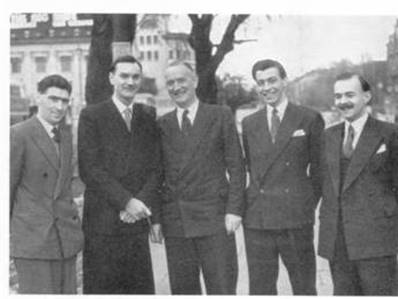 The
photograph can hardly be described as a true photograph of our Golders Green
staff because on the day of our visit Miss R. M. Barton was away through
illness, and as Mr. D. E. Vaux was on holiday two extra “hands” were on duty. We did not meet Mr. Vaux,
though he came in for the
photograph, but the other people who appear on it are Mr. F. T. Belcher, a
trainee of nearly a year's standing and Mr. J. S. Davies of District Office
Relief Staff. The staff is an all-London
staff, headed by Mr. V. W. H. Eckett, on whose brow the cares of management
sit lightly. Mr. Eckett, who entered the service in 1926 has been at 68,
Lombard Street, Swanley, Maidstone, Farnborough, Orpington, London District
Office and at Sidcup. He held signing powers at Sidcup from December 1946
until his present appointment last year, his first managership. Mr. and Mrs.
Eckett are both to their home ground, where natives
of Golders Green and have been quite pleased to return they have many
friends, after living in Orpington since
1937. Mr. D. E. Vaux is
second-in-command and Mr. D. S. Gibbens is number three. The
photograph can hardly be described as a true photograph of our Golders Green
staff because on the day of our visit Miss R. M. Barton was away through
illness, and as Mr. D. E. Vaux was on holiday two extra “hands” were on duty. We did not meet Mr. Vaux,
though he came in for the
photograph, but the other people who appear on it are Mr. F. T. Belcher, a
trainee of nearly a year's standing and Mr. J. S. Davies of District Office
Relief Staff. The staff is an all-London
staff, headed by Mr. V. W. H. Eckett, on whose brow the cares of management
sit lightly. Mr. Eckett, who entered the service in 1926 has been at 68,
Lombard Street, Swanley, Maidstone, Farnborough, Orpington, London District
Office and at Sidcup. He held signing powers at Sidcup from December 1946
until his present appointment last year, his first managership. Mr. and Mrs.
Eckett are both to their home ground, where natives
of Golders Green and have been quite pleased to return they have many
friends, after living in Orpington since
1937. Mr. D. E. Vaux is
second-in-command and Mr. D. S. Gibbens is number three.

|
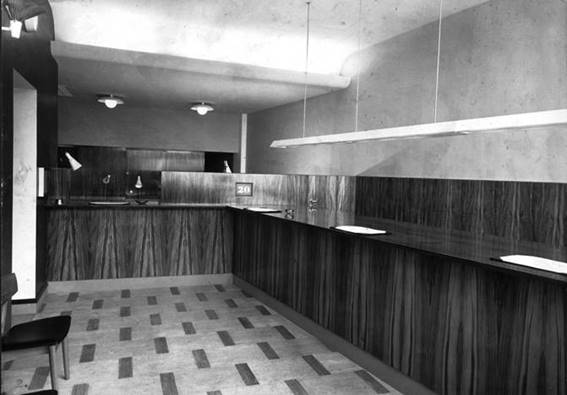
|
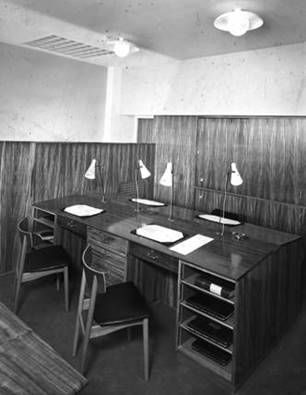
|
|
Branch
Images © Barclays Ref 0030/1071
|
|
Sometimes the stuff of
which dreams are made, happens to ordinary people in ordinary places. So it is that in 1966, Mr D G Harris,
Manager of Golders Green Branch, meets a young man who will go on to carve
a lasting legacy for himself on the World stage. At this stage still known as Cassuis
Clay, the future champion of civil rights is being honoured by the
Pakistani Community of London…

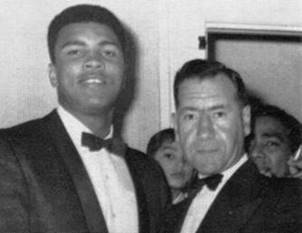 

The only social function attended
in England by Cassius Clay in april this year was a reception and dinner
given in his honour by the Pakistani Community of London. The photograph
shows him with Mr D G Harris (Manager, Golders Green) who attended as the
guest of a customer, and found Cassius a very pleasant and intelligent
young man.
|
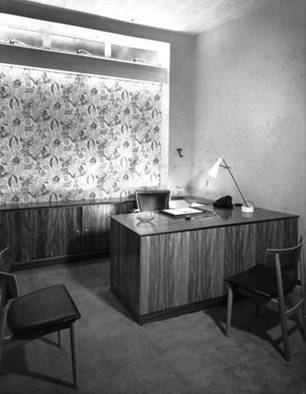
|
|

